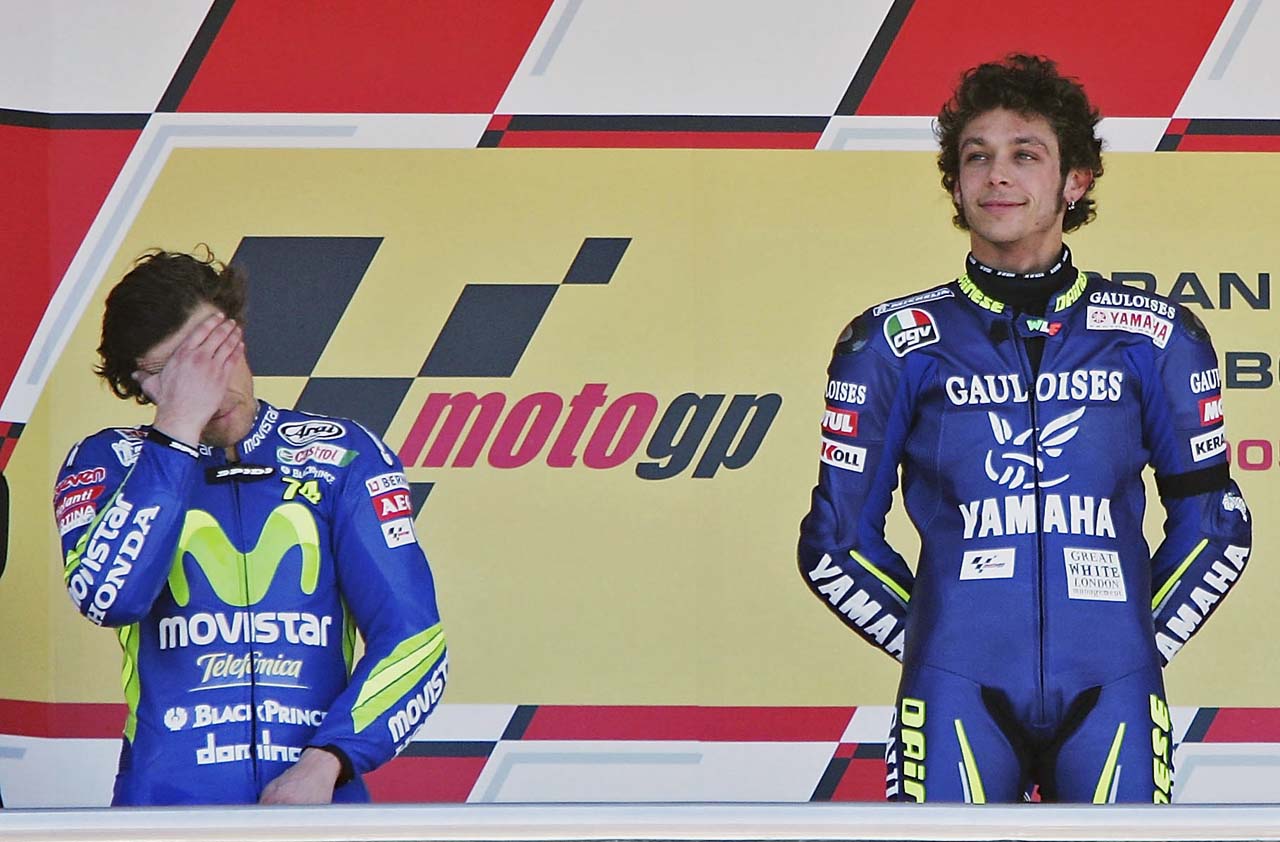The Best and Worst Mutual Funds of the Market Correction
A look at what worked in both directions ... and what went hopelessly wrong


Experience is a wonderful teacher, which is how we know that many mushrooms are poisonous and that owls make lousy pets. Investors who lived through the September-to-December market correction also got to learn how their mutual funds fared in an abrupt downturn – and that’s something worth knowing.
The Standard & Poor’s 500-stock index tumbled 19.4% with reinvested dividends in 96 days from Sept. 20 through Dec. 24. The correction left few markets unscathed: The MSCI Europe, Australasia and Far East index tumbled 13.6%, and the Russell 2000 small-company stock index shed 26.1%.
Fortunately, the stock market roared back after its Christmas Eve low: At this writing, the S&P 500 is up 19.2% since Dec. 24, and for the round trip – from September peak to today – the blue-chip index is down just 3.9%.
From just $107.88 $24.99 for Kiplinger Personal Finance
Become a smarter, better informed investor. Subscribe from just $107.88 $24.99, plus get up to 4 Special Issues

Sign up for Kiplinger’s Free Newsletters
Profit and prosper with the best of expert advice on investing, taxes, retirement, personal finance and more - straight to your e-mail.
Profit and prosper with the best of expert advice - straight to your e-mail.
What can we learn from this, aside from not selling in a panic? Some managers fare well in reducing losses in a correction; some excel at producing gains on the rebound; relatively few do well in both directions.
Here’s a look at how diversified, actively managed mutual funds fared in the most recent market unpleasantness: the best on the way up, on the way down, and for the round trip. We also included the worst funds for the round trip. Our data for the correction is Sept. 20, 2018 to Dec. 24, 2018; the recovery, Dec. 24, 2018, to Feb. 22, 2019; and the round trip, Sept. 20, 2018, to Feb. 22, 2019. All data is courtesy of Morningstar.
Large Blend
These funds look for stocks of big, growing companies whose stocks are reasonably priced, relative to earnings.
Best fund, up market: Selective Opportunity Foundation (SLCTX), up 27.3%. This $89.4 million fund looks for stocks of companies with fat profit margins and few competitors. Drawback: It’s young and expensive, with a 1.54% expense ratio.
Best fund, down market: AMG Yacktman Focused N (YAFFX), down 7.3%. Lead manager Stephen Yacktman has worked on the fund since 2003 and took the reins from his father, star manager Donald Yacktman, in 2016. The fund had 20.3% of its assets in cash at the end of 2018.
Best fund, round trip: Selective Opportunity Foundation, up 5.0%. And that is despite an 18.3% drop during the correction.
Worst fund, round trip: Catalyst/Lyons Tactical Allocation A (CLTAX), down 16.6%. CLTAX went for the hat trick, faring worst in the up phase (+5.6%), the down phase (-21.0%) and the round trip. As of the end of January, the fund was 84.5% in bonds and 15.5% in cash.
Large Growth
These funds look for big companies whose earnings should get bigger.
Best fund, up market: Zevenbergen Growth Institutional (ZVNIX), up 39.0%. The retail shares of the fund trade under the ticker ZVNBX. Technology and consumer cyclical stocks are its rocket fuel. Top three holdings as of Dec. 31: Amazon.com (AMZN), Netflix (NFLX) and Exact Sciences (EXAS), a molecular diagnostics company.
Best fund, down market: Quantified STF Investor (QSTFX), down 11.3%. This fund trades frenetically to follow market trends and did well on the way down. It missed the trend on the way up, though, falling 7.5% during the rebound and chalking up a dismal 17.9% round-trip loss.
Best fund, round trip: Fidelity Advisor Growth Opportunities A (FAGAX), up 4.9%. Manager Kyle Weaver uses tech stocks for much of this fund’s rocket fuel, with Alphabet (GOOGL), the parent company of Google, at the top of its holdings as of the end of 2018. The fund ranked third in its peer group on the way down, and sixth on the way up. Sadly, this fund carries a maximum 5.75% sales charge.
Worst fund, round trip: Quantified STF Investor, down 17.9%. See above.
Large Value
Sometimes, a big stock can be a big bargain, and value investors look hard for stocks that sell at a discount to a company’s real value.
Best fund, up market: Lyrical U.S. Value Equity Institutional (LYRIX), up 25.8%. While the fund performed well on the way back up, it fell hard – 23.8% – on the way down. Biggest holding at the end of the year: insurance company Aflac (AFL).
Best fund, down market: Copley Fund (COPLX), down 6.8%. Longtime manager Irving Levine passed away last year, but current skipper Peter Gottlieb handled the correction adroitly. The fund is heavy in energy, financial services and especially utilities.
Best fund, round trip: Copley Fund, up 4.4%.
Worst fund, round trip: Mount Lucas U.S. Focused Equity Institutional Class (BMLEX), down 15.4%. Big stakes in Macy’s (M) and CenturyLink (CTL), the fund’s second- and third-largest holdings at the end of 2018, helped sink this fund.
Mid-Cap Blend
These funds frolic in the field of mid-sized companies, hoping to find stocks of growing companies that are reasonably priced, relative to earnings.
Best fund, up market: Kinetics Spin-Off and Corporate Restructuring Advisor A (LSHAX), up 35.7%: As its name implies, the fund invests in companies that are either trying to remake themselves or make a go of it by leaving their parent company. Not surprisingly, the fund tumbled 31.0% in the correction. It’s a load fund, too, aimed at investment advisers.
Best fund, down market: Frank Value Investor (FRNKX), down 4.1%. This tiny $13.6 million fund has a big 1.52% expense ratio. The secret sauce in the correction: A heaping helping of bonds. The fund had 61.6% of its portfolio in bonds and just 16.1% in stocks. And, yes, Brian Frank is the portfolio manager.
Best fund, round trip: FAM Equity-Income Investor (FAMEX), up 2.3%. Managers Thomas Putnam and Paul Hogan have run this value-seeking fund since its inception in 1996. The fund is small – $283 million – and moderately expensive, with a 1.26% expense ratio. Nevertheless, its portfolio of unloved stocks that typically pay a dividend held up nicely.
Worst fund, round trip: Putnam Equity Spectrum Y (PYSYX), down 14.8%. This fund fell 24.9% in the correction and couldn’t get very far back up, rising 13.6% in the up market.
Mid-Cap Growth
These funds hope for future earnings growth in mid-sized companies.
Best fund, up market: Hodges Fund Retail (HDPMX), up 41.5%. A big overweight position in basic materials stocks, such as US Concrete (USCR) and United States Steel (X), propelled this fund to its top spot.
Best fund, down market: Nieman Opportunities A (NEOMX), down 14.8%. The fund went into the correction in September with big overweights in financial services stocks as well as a nearly 16% stake in international stocks – both of which helped ease the downturn.
Best fund, round trip: Shelton Green Alpha (NEXTX), up 5.2%. This fund emphasizes green energy, with top holdings like Vestas Wind A/S ADR (VWDRY), a top wind energy company, and Canadian Solar (CSIQ).
Worst fund, round trip: Hodges Fund Retail, down 15.8%. A big gain in an up market is great, but not when you lose 40.5% in the down market – which is what Hodges did.
Mid-Cap Value
These funds hunt for bargains among mid-sized companies.
Best fund, up market: Hotchkis & Wiley Mid-Cap Value A (HWMAX), up 30.8%. This broker-sold fund had 20% of its portfolio in energy companies, such as Whiting Petroleum (WLL), its largest holding as of Dec. 31. The fund also had the worst record in the correction, falling 31.3%.
Best fund, down market: Goodhaven Fund (GOODX), down 14.7%. Broad diversification helped this fund in a punk market. In November, the latest information available from Morningstar, the fund had 11.4% of its assets in cash, 13.5% in non-U.S. stock and 10% in bonds.
Best fund, round trip: Jensen Quality Value J (JNVSX), down 0.7%. The danger with value investing is that some stocks deserve to be cheap because they are lousy companies. Jensen looks for cheap companies with a long-term record of high returns on shareholder equity.
Worst fund, round trip: James Mid Cap (JAMDX), down 11.8%. The fund’s gains in the up market weren’t enough to overcome its 28.1% loss in the correction.
Small-Cap Blend
These funds seek out GARP – growth at a reasonable price – when picking small-company stocks.
Best fund, up market: Hodges Small Cap Retail (HDPSX), up 33.4%. This fund’s hunting grounds are the membership of the Russell 2000 index, which measures small-company stock performance. At the end of September, the fund had loaded up on energy, technology and consumer cyclical stocks.
Best fund, down market: Segall Bryant & Hamill Small Cap Value (SBHVX), down 18.8%. No one likes a loss of that magnitude, but the average small-company blend fund fell 24.8% during the correction. The fund’s performance is all the more remarkable in light of its 21% stake in technology.
Best fund, round trip: Highland Small-Cap Equity A (HSZAX), up 3.4%. This fund’s 2.34% expense ratio is reason for pause, as is its 5.75% maximum sales charge. But the fund, as of the end of February, has beaten 76% of its peers over the past 10 years, and 97% of its peers the past five years.
Worst fund, round trip: Pacific Advisors Small Cap Value A, (PASMX), down 17.2%. The fund gained 26.6% on the upswing but plunged 34.6% on the way down.
Small-Cap Growth
Best fund, up market: Delaware Small Cap Growth Institutional (DSGGX), up 39.3%. The retail version of this broker-sold fund trades under the ticker DSGDX. The fund toppled 29.6% on the down leg of the correction, leaving investors with a 2.0% round-trip loss.
Best fund, down market: Virtus KAR Small-Cap Growth C (PSGCX), down 18.0%. A loss this size is nothing to brag about … until you realize that the average small-growth fund tumbled 27.1%. Individuals must buy the funds through a broker; the ticker for the A shares is PSGAX.
Best fund, round trip: Needham Small Cap Growth Retail (NESGX), up 2.7%. The fund fell 21.5% in the down phase of the correction. The fund typically buys stocks whose market value – price times shares outstanding – is less than $5 billion, and, at the end of the year, had a whopping 73.5% of its assets in technology stocks.
Worst fund, round trip: Nysa Fund (NYSAX), down 35.3%. This snakebitten fund has managed to lose money at a 1.6% average annual pace for the past 10 years through Feb. 28, and seems intent on keeping the streak going.
Small-Cap Value
These funds look for small-company stocks that Wall Street has overlooked.
Best fund, up market: Schneider Small Cap Value (SCMVX), up 33.6%. Big stakes in energy companies, such as Chesapeake Energy (CHK) and Transocean (RIG) helped this fund on the way up.
Best fund, down market: Intrepid Endurance Investor (ICMAX), down 4.0%. As of the end of 2018, the fund had 66% of its assets in cash – a sure-fire way to cushion losses in a bear market.
Best fund, round trip: Queens Road Small Cap Value (QRSVX), up 2.2%. A hefty 24% cash position and overweight positions in industrial, technology and consumer stocks helped this fund weather the up and down markets.
Worst fund, round trip: Schneider Small Cap Value, down 41.7%. Despite its big gain in the up market, the fund’s nearly 42% loss in the down market sandbagged its round-trip record.
Profit and prosper with the best of Kiplinger's advice on investing, taxes, retirement, personal finance and much more. Delivered daily. Enter your email in the box and click Sign Me Up.

-
 Healthy to 100: Secrets from Countries Where Retirees Age Best
Healthy to 100: Secrets from Countries Where Retirees Age BestLongevity is a team sport, according to author Ken Stern. Here's the secret sauce for living long, healthy lives from countries like Italy and Japan.
-
 My First $1 Million: Semiretired CPA, 68, San Francisco
My First $1 Million: Semiretired CPA, 68, San FranciscoEver wonder how someone who's made a million dollars or more did it? Kiplinger's My First $1 Million series uncovers the answers.
-
 6 Overlooked Areas That Can Make or Break Your Retirement
6 Overlooked Areas That Can Make or Break Your RetirementIf you're heading into retirement with scattered and uncertain plans, distilling them into these six areas can ensure you thrive in later life.
-
 Stocks Struggle for Gains to Start 2026: Stock Market Today
Stocks Struggle for Gains to Start 2026: Stock Market TodayIt's not quite the end of the world as we know it, but Warren Buffett is no longer the CEO of Berkshire Hathaway.
-
 Stocks End Volatile Year on a Down Note: Stock Market Today
Stocks End Volatile Year on a Down Note: Stock Market TodayAfter nearing bear-market territory in the spring, the main market indexes closed out the year with impressive gains.
-
 Stocks Extend Losing Streak After Fed Minutes: Stock Market Today
Stocks Extend Losing Streak After Fed Minutes: Stock Market TodayThe Santa Claus Rally is officially at risk after the S&P 500's third straight loss.
-
 Santa Claus Rally at Risk as Tech Stocks Slump: Stock Market Today
Santa Claus Rally at Risk as Tech Stocks Slump: Stock Market TodayThe Nasdaq Composite and Dow Jones Industrial Average led today's declines as investors took profits on high-flying tech stocks.
-
 Gold and Silver Shine as Stocks Chop: Stock Market Today
Gold and Silver Shine as Stocks Chop: Stock Market TodayStocks struggled in Friday's low-volume session, but the losses weren't enough to put the Santa Claus Rally at risk.
-
 The Santa Claus Rally Officially Begins: Stock Market Today
The Santa Claus Rally Officially Begins: Stock Market TodayThe Santa Claus Rally is officially on as of Wednesday's closing bell, and initial returns are positive.
-
 'Humbug!' Say Consumers, Despite Hot GDP: Stock Market Today
'Humbug!' Say Consumers, Despite Hot GDP: Stock Market Today"The stock market is not the economy," they say, but both things are up. Yet one survey says people are still feeling down in the middle of this complex season.
-
 Stocks Rise to the Spirit of the Season: Stock Market Today
Stocks Rise to the Spirit of the Season: Stock Market TodayInvestors, traders and speculators are beginning to like the looks of a potential year-end rally.